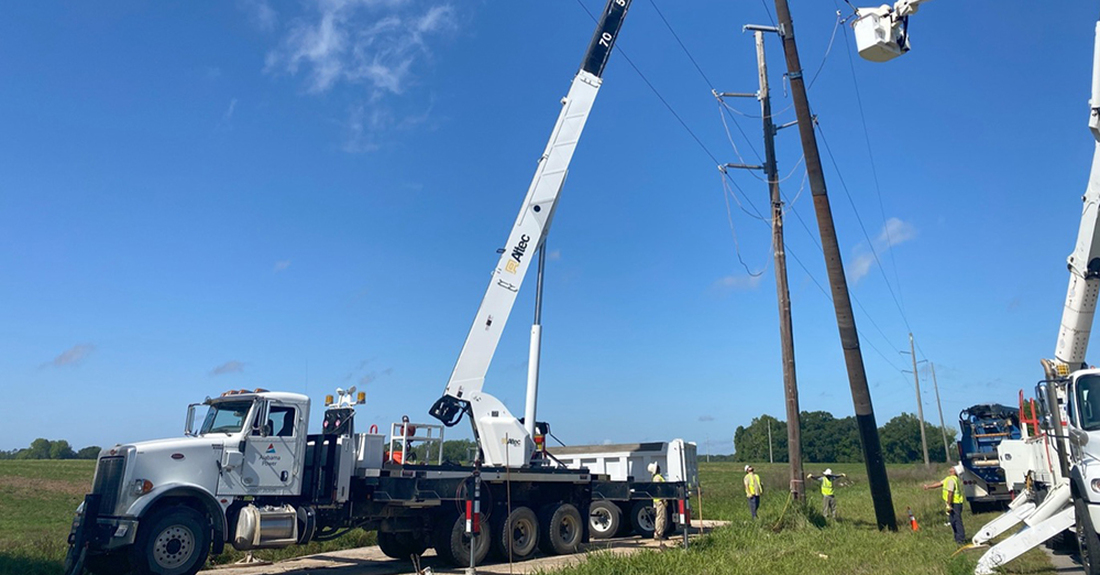
Factors That Affect Utility Pole Replacement Costs
How much it costs to replace a utility pole depends on several factors, including location, material selection, and regulatory requirements. Remote sites, difficult terrain, and strict zoning laws increase costs by requiring specialized equipment and additional labor.
Location and Installation Challenges
Difficult terrain increases installation expenses by requiring the use of specialized equipment. Remote areas often require off-road vehicles, while urban settings involve traffic control measures that extend labor hours. Limited access to a site can also slow the process, adding to the total cost.
Weather delays also frequently affect utility pole replacements. Heavy rain, extreme temperatures, or strong winds force crews to pause work, increasing labor and equipment rental costs. Planning installations during stable weather conditions helps minimize unexpected expenses.
Labor and Permit Costs
Utility pole replacements require trained linemen, equipment operators, and engineers, all of whom charge premium rates. Overtime pay for emergency replacements significantly increases labor costs. Municipal regulations may also require union workers, further raising expenses.
Permits and regulatory approvals contribute to overall costs. Local governments require inspections to ensure compliance with zoning, safety, and environmental standards. Slow approval processes can delay work and extend project timelines, leading to higher labor and equipment costs.
Material Costs for Different Types of Utility Poles
Material selection significantly affects replacement costs, as some poles last longer and require less maintenance than others.
Cost Comparison: Initial Versus Long-Term Investment
Lower-cost materials often result in more frequent replacements, driving up long-term expenses. Wood poles may cost less initially, but their ongoing maintenance and shorter lifespans make them more expensive over time. Ductile iron and steel poles last longer, reducing total ownership costs.
Durable poles also prevent service disruptions and emergency replacement costs. Fewer failures mean reduced labor expenses and less downtime for businesses and residents. Investing in high-quality materials lowers overall costs while improving reliability.
Environmental and Weather Considerations
Climate and environmental factors influence how quickly utility poles degrade. Wood rots faster in humid or pest-prone areas, while steel corrodes in salty coastal environments. Ductile iron and concrete offer higher resistance to extreme conditions, making them ideal for harsh climates.
Weather-related stress shortens pole lifespans. Hurricanes, tornadoes, and ice storms place extreme loads on structures, requiring stronger materials. Selecting poles designed for specific environmental conditions reduces replacement frequency and overall costs.
Labor and Equipment Expenses for Utility Pole Replacement
Labor and equipment play a large part in how much it costs to replace a utility pole. Crews use cranes, bucket trucks, and augers to remove and install utility poles, and each piece of equipment adds to the cost. More complex projects, such as those involving high-voltage lines or large transformers, require additional labor and specialized machinery.
Utility Pole Removal and Site Preparation
Removing an old pole presents challenges, especially when it is deeply embedded or secured with concrete. Some poles require cutting and careful extraction to avoid damaging surrounding infrastructure. Safe removal techniques ensure minimal disruption to existing power lines.
Preparing the site for a new pole includes excavating and stabilizing the ground. Workers may need to reinforce the soil or create deeper foundations in unstable terrain.
Equipment Costs for Installation
Bucket trucks allow linemen to reattach power lines safely, while cranes lift heavy poles into place. Specialized augers dig precise holes, ensuring a stable foundation. Equipment rental fees increase project costs, particularly if delays extend usage periods.
Difficult installations sometimes require tracked vehicles or aerial lifts. Contractors factor these expenses into their estimates, adjusting costs based on job complexity. Well-planned projects minimize wasted time and reduce unnecessary equipment expenses.
Emergency Versus Planned Utility Pole Replacement Costs
Planned replacements help organizations prepare more efficiently for replacement projects. On the other hand, emergency replacements cost more due to short-notice labor needs, expedited material sourcing, and urgent equipment rentals.
Crews mobilize immediately for urgent jobs, often charging overtime or holiday rates. Storms that down multiple poles spark material shortages, pushing up unit costs. Logistics become chaotic, causing higher shipping fees and potential delays as everyone competes for scarce equipment.
Insurance sometimes covers partial costs if policies include coverage for natural disasters or accidents. However, deductibles and coverage limitations still leave gaps.
Choosing the Right Utility Pole Supplier for Cost Savings
Choosing high-quality materials helps prevent frequent replacements and unexpected failures, reducing long-term costs, and forming a partnership with the right supplier can afford utility companies access to durable, affordable replacement poles. We at McWane Poles provide ductile iron power line poles and parts that deliver long-term reliability and cost efficiency.
Warranty and Longevity Considerations
Many manufacturers back products with warranties. McWane Poles warranties their product against manufacturing defects for the useful life of the product.
Long-lasting poles, such as those manufactured using ductile iron, translate to stable infrastructure and satisfied ratepayers.

